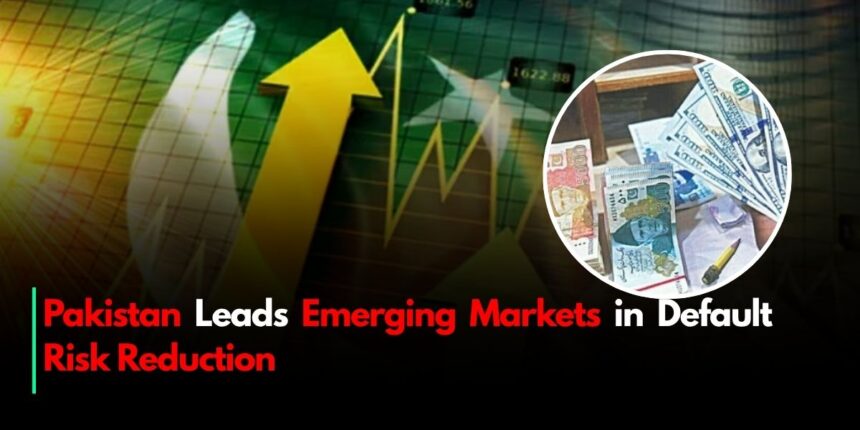Pakistan has made a huge change in the way the world economy works. Bloomberg Intelligence’s most recent data and official pronouncements from Islamabad say that the country has seen the biggest decline in sovereign default risk of any emerging market. This milestone is a big step forward in Pakistan’s journey to restore its economy.
A Record Low in Default Risk
Pakistan’s CDS-implied default probability dropped from about 59% to 47% in the last year, which is a decline of 1,100 basis points. This drop is more than those in other developing economies, like Argentina (–7%), Tunisia (–4%), and Nigeria (–5%).
Khurram Schehzad, an advisor to the Finance Ministry, said, “Pakistan stands out globally as the most improved economy in reducing sovereign default risk.”
What is the cause of the improvement?
There are a number of reasons that are all connected that have led to this big improvement:
Macroeconomic stabilization – Islamabad has prioritized both quickly reducing inflation and preventing a further devaluation of the Pakistani rupee. Inflation is in low single digits (falling from around 40 per cent at the mid-year point in 2023).
Structural reform – Pakistan started down the fiscal consolidation and governance reform track with the IMF supervised bailout package. The fiscal consolidation involved debt management and opening international markets.
Improved external balances – Foreign currency reserves improved to over $12 billion at the end of 2024 from dangerously low reserves of under $500 million; allowing for sustainable debt repayment.
Improved credit ratings – International credit rating agencies S&P and Fitch have started to change their view of Pakistan by publicly stating that the country economy is starting to recover.
Why This Is Important
A lower CDS spread means that the market is more sure of itself. Credit Default Swaps are insurance tools that show how the market thinks about a country’s risk of default. The smaller the spread, the more likely it is that the country will pay its debts.
Pakistan has made a stronger case for re-entering global capital markets by leading other emerging nations in lowering their default risk. This includes possible sovereign bond issues, which may pay for infrastructure or refinance debt that is about to mature at better rates.
More problems to come
Even though things are getting better, there are still a lot of problems to deal with:
Credit ratings are still in the speculative range (Moody’s Caa2; S&P CCC+), which shows that the company is still vulnerable.
Investors may not feel good about the market if there is political uncertainty and instability in the region.
External debt is still significant, and cash needs to keep coming in to keep things moving.
Pakistan must not slow down if it wants to fully take advantage of the better credit perception. It needs to keep making reforms and being fiscally responsible.
Final Thoughts
Pakistan is at the top of the list for reducing default risk among emerging countries, which is a hint of a larger economic recovery. The achievement shows that the government took aggressive steps, like controlling inflation and rebuilding reserves. Now, Islamabad has to prove that it can turn better numbers into long-term growth and access for investors.
If resilience translates into momentum, Pakistan might soon go from recovery to growth, showing the world that even in the hardest situations, bold reforms work.








